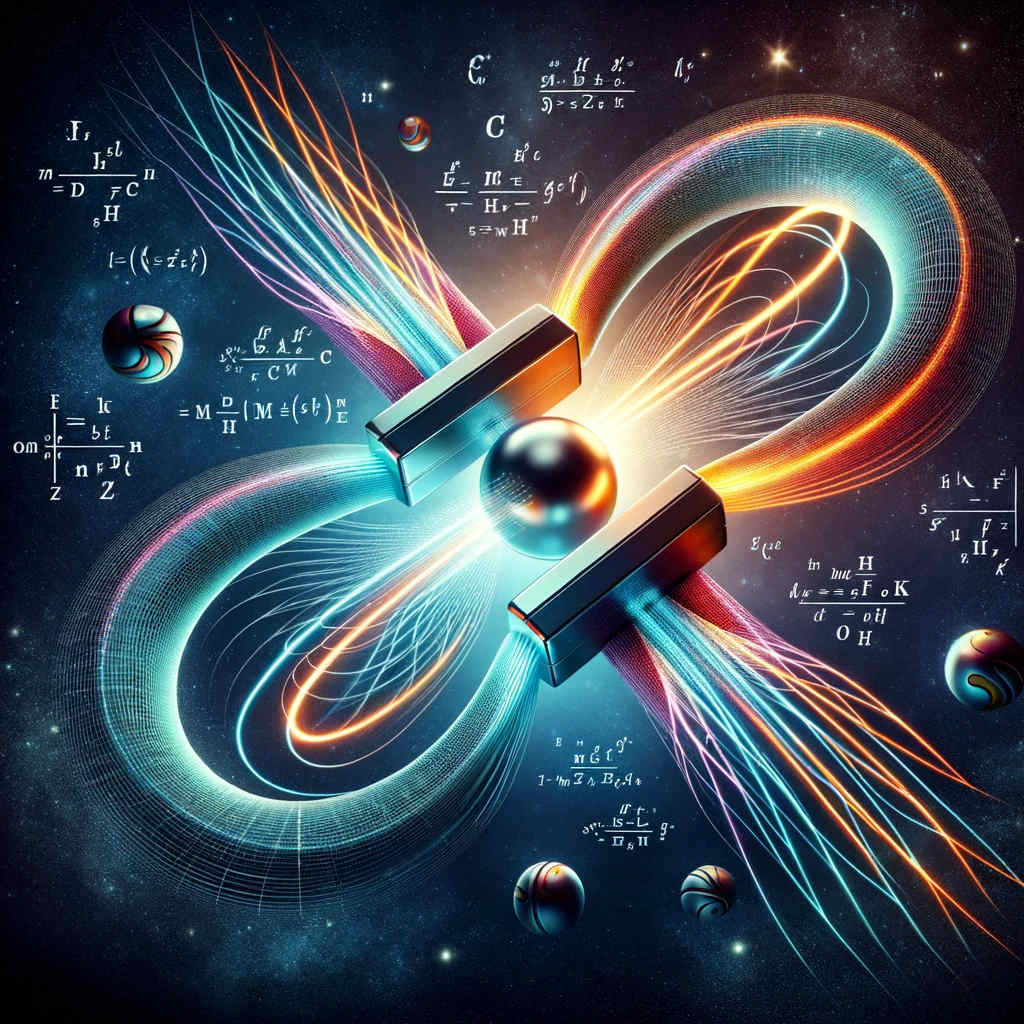Maxwell’s Equations
Maxwell’s Equation is described by 4 queations as following(not only Integral form but also differential form), this article is going to explain these equations.
Gauss’s Law for Electricity
\oint \mathbf{E} \cdot d\mathbf{A} = \frac{Q_{\text{enc}}}{\varepsilon_0}\\
\nabla \cdot \mathbf{E} = \frac{\rho}{\varepsilon_0}Gauss’s Law for Magnetism
\oint \mathbf{B} \cdot d\mathbf{A} = 0 \\
\nabla \cdot \mathbf{B} = 0Faraday’s Law of Induction
\oint \mathbf{E} \cdot d\mathbf{l} = - \frac{d}{dt} \int \mathbf{B} \cdot d\mathbf{A} \\
\nabla \times \mathbf{E} = -\frac{\partial \mathbf{B}}{\partial t}Ampère’s Law with Maxwell’s Addition
\oint \mathbf{B} \cdot d\mathbf{l} = \mu_0 I_{\text{enc}} + \mu_0\varepsilon_0 \frac{d}{dt} \int \mathbf{E} \cdot d\mathbf{A}\\
\nabla \times \mathbf{B} = \mu_0 \mathbf{J} + \mu_0\varepsilon_0 \frac{\partial \mathbf{E}}{\partial t}Let’s see and grab what these equations mean.
Gauss’s Law for Electricity
The Gauss’s law for Maxwell’s equations using the divergence operator is expressed as:
\nabla \cdot \mathbf{E} = \frac{\rho}{\varepsilon_0} In this equation, div E represents the divergence of the electric field E, p is the electric charge density, and e0 is the vacuum permittivity(Dielectric Constant).
In simple terms, Gauss’s law in the context of electromagnetism states that the divergence of the electric field at any point in space is proportional to the electric charge density at that point. It implies that electric field lines originate from positive charges and terminate at negative charges. This law is a fundamental principle in electromagnetism and plays a critical role in understanding how electric fields behave in the presence of electric charges.
MonoPole never exists
In electromagnetism,
\nabla \cdot \mathbf{B} = 0the equation represents the fact that magnetic monopoles do not exist. This equation is one of Maxwell’s equations, specifically the one stating that the magnetic field B has no divergence (i.e., it is a solenoidal vector field).
The equation (where nabla represents the curl operator) means that there are no ‘sources’ or ‘sinks’ of magnetic field lines. In other words, magnetic field lines do not start or end at any point in space, which is characteristic of a hypothetical magnetic monopole. Instead, magnetic field lines always form closed loops. This is unlike electric field lines, which do start and end on electric charges. Therefore, this equation implies that magnetic monopoles, or isolated north or south magnetic poles, do not exist in nature. All known magnetic phenomena can be explained with just magnetic dipoles, which have both a north and a south pole.
Faraday’s law
The Faraday’s law of induction using the curl (rot) operator is expressed as:
\nabla \times \mathbf{E} = -\frac{\partial \mathbf{B}}{\partial t} In this equation, rot E represents the curl of the electric field E, and dB/dt is the time rate of change of the magnetic field B.
Faraday’s law is a fundamental law in electromagnetism that describes how a changing magnetic field can induce an electric field. This law is key to understanding electromagnetic induction, which is the principle behind many electrical generators and transformers. It states that the curl of the electric field is equal to the negative rate of change of the magnetic field. This relationship shows that a time-varying magnetic field can create an electric field, which is the principle behind electromagnetic induction.
Good Youtube Lesson
I found good Youtube Lesson.
